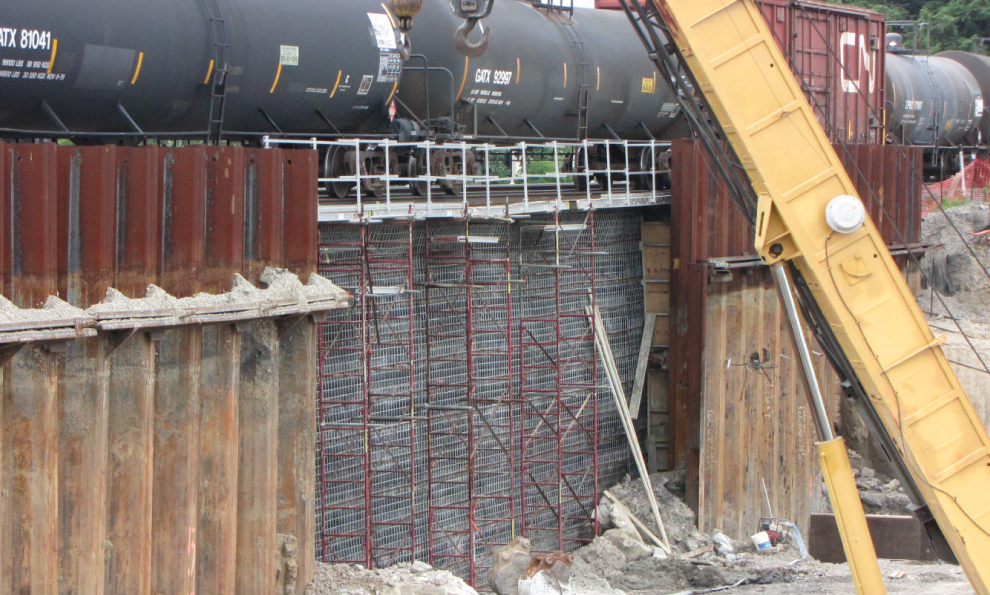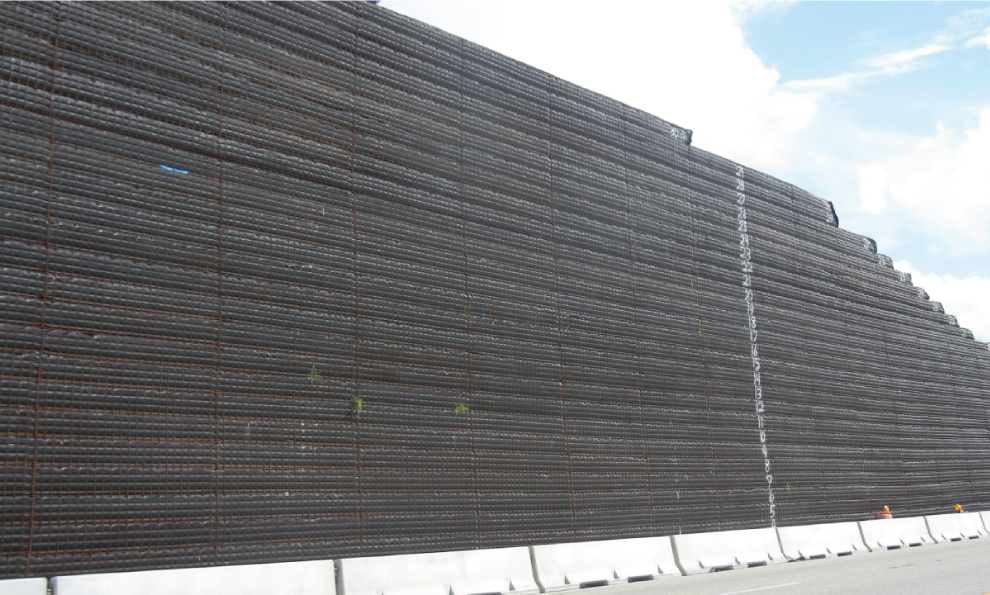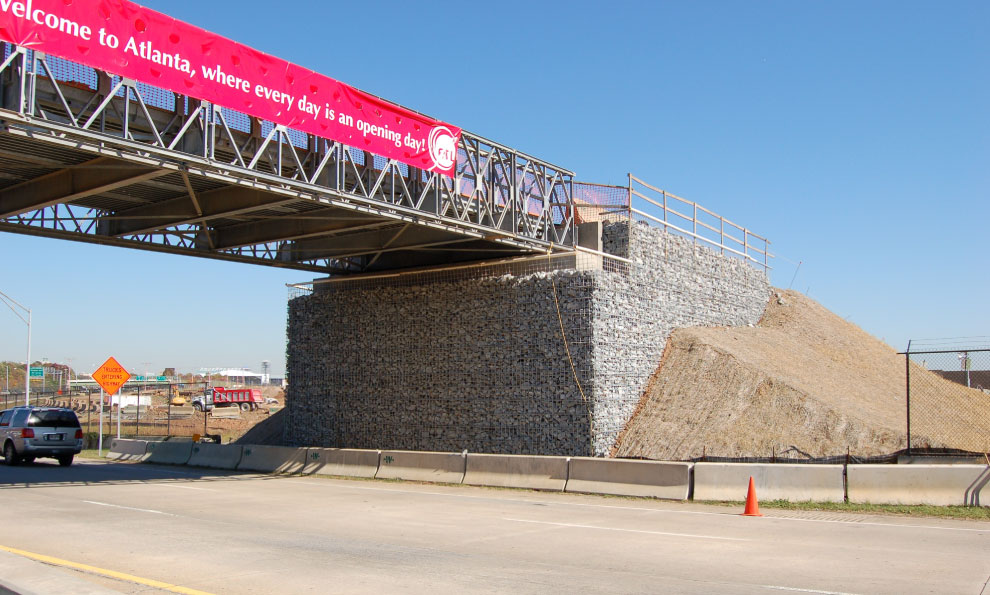Wire Mesh Facing Retaining Walls
While wire mesh facing may not have the same aesthetic or rigidity benefits as precast concrete, it offers some distinct advantages functionally, and is an excellent solution for both permanent and temporary structures.
Wire mesh panels are lightweight and do not require any lifting or bracing equipment. They require less lead time for delivery, so construction can begin sooner. They can be easily trimmed or modified in the field to quickly fit any geometric situation. No concrete leveling pad is needed. The material and soil reinforcement connections provide superior durability against differential settlement, erosion, impact, and seismic activity.
Temporary Applications for Wire Mesh Retaining Walls
Construction projects often require temporary retaining walls to complete the job in phases, and temporary MSE walls are an economical and fast solution for fill situations. Similar to a conventional MSE wall, but with relaxed design requirements and a shorter service life, a temporary MSE wall with wire mesh facing can be left in place or easily removed after use. Temporary MSE walls can also be incorporated into the permanent structures, allowing for extra efficiency in design of the overall project.
- Temporary roadway alignments or ramps for shifting traffic patterns during construction phases.
- Roadway widening projects.
- Temporary surcharge for increasing the settlement rate of roadway embankments or other areas.
- Bridge abutment phased construction for new bridges or bridge replacement projects.
- Foundations for cranes or other heavy equipment.
- Accommodating utilities behind a permanent wall.

Benefits of Temporary Wire Mesh Retaining Walls:
- Differential settlement
- Efficiency and speed of construction
- Superior finished wall alignment
- Durability
- Mechanical connection to soil reinforcements

 Tap to Call
Tap to Call Tap to Email
Tap to Email

